Acquisition of a vacuum furnace represents a major capital equipment investment and one that creates a long-term relationship with your supplier partner. Thus the choice of what to buy and who to purchase it from requires careful planning and considerable up-front research. You need to know when and how to apply vacuum technology if it will be the most cost-effective solution for what you need to do, what questions to ask and what information to provide.
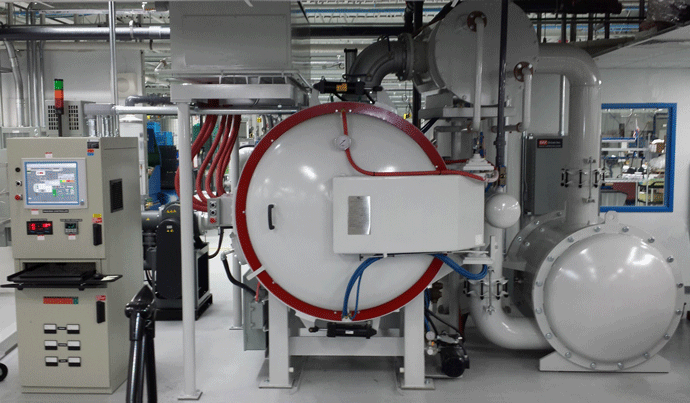
The process begins by understanding your specific needs and asking all the right questions. Is it more prudent to upgrade an older piece of equipment, purchase new or purchase used? Is it better to have one large furnace or two smaller ones? Is a batch solution best or is a continuous approach better?
Ask yourself what the equipment must do, what productivity must be achieved (now and in the future) and what type of specifications or compliance requirements (e.g. Nadcap, CQI-9) must be met. The type of material(s) being run, the skill of your workforce, the (internal and external) support available and the type of controls and/or quality records required are additional considerations. All of these will help define how much training and support will be needed from your supplier partner.
The following factors typically influence equipment design and represent information that should be shared with potential supplier partners:
- Material(s) to be processed
- Raw material condition (e.g. chemistry, grain size, hardenability, cleanliness, prior microstructure)
- Manufacturing sequence (e.g. type of operations and potential for induced stress)
- Part geometry, mass, and design (e.g. thin and thick sections in close proximity to one another, through and blind hole locations, sharp corners, etc.)
- Dimensional requirements
- Surface finish requirements
- Specifications (mechanical, metallurgical, physical)
- Workload thermocouple requirements
- Documentation requirements
- Loading arrangement (size, weight, load density, method of part support)
- Cleaning (method & degree), level of cleanliness required
- Temperature requirements (preheat, austenitizing, uniformity)
- Ramp rates
- Partial pressure requirements
- Time at temperature
- Production rate
- Process application specific criteria (e.g. brazing, gas or oil quenching)
- Additional heat treatment steps (e.g. deep freeze, temper, coating)
- Post heat treatment operations (e.g. plating, stock removal, shot peening)
- Testing & quality control/quality assurance requirements
Furnace Type & Size
Vacuum furnaces come in a variety of types and sizes including horizontal (Fig. 1) and vertical (Fig. 2) orientations. Vacuum furnaces range from small benchtop laboratory units to large car-bottom style furnaces capable of processing tons of material at a time. The initial capital outlay and operating costs are proportional to size.
The furnace chamber must be physically large enough to handle the largest load or workpiece (including fixturing) to be treated. Ideally, loads should be evenly distributed and spaced to allow for radiant heating and circulation of the cooling media around all surfaces. As a result, the furnace hot zone may need to be slightly larger than first planned. Since it is impractical (and often impossible) to change the internal volume of a vacuum furnace, careful consideration of future needs must be factored into the sizing process. The furnace manufacturer can review the information provided and recommend the most appropriate size and style.
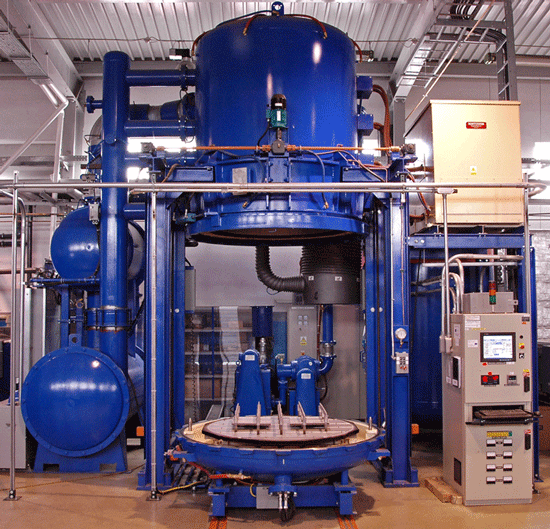
Basic Furnace Features
A critical step in the process after choosing the basic furnace configuration and features necessary to perform the intended application and then select options to support the choices. Four features common to any vacuum furnace are:
- Hot zone (effective work area, hearth design & capacity, maximum & normal operating temperature, temperature uniformity, insulation, heating element insulators, cooling nozzles, cooling system (internal or external heat exchanger) etc.)
- Heating elements (material, type, design, support, current & voltage meters, ground fault indicators)
- Pumps (ultimate & operating vacuum level, wet or dry pumps, blowers, diffusion umps, pump-down time to high vacuum crossover, furnace leak rate)
- Controls (power supply type, control, over temperature and recording instrumentation, furnace & workload thermocouple types).
In addition, ancillary items (vacuum vessel design & materials of construction, partial pressure circuitry, water cooling system, loaders, surge tanks, convective heating, service, spare parts and technical support) are additional considerations that must be evaluated.
Hot Zone Construction.
Choosing the proper hot zone construction (including load support, cooling gas flow orientation and the like) for the materials and processes to be run is one of the most important initial decisions. This choice, in addition to impacting product quality, will influence ease of maintenance, the frequency of repairs, energy usage, and overall furnace life. The most common insulation packages are classified as:
- All graphite (board, fiber, carbon-carbon composite)
- All metallic (radiation shields or shield pack)
- Combination (inner metallic shield(s) separated or backed by ceramic or graphite insulation)
- All ceramic fiber
It is important that the hot zone support structure is designed to prevent distortion of the insulation that would cause warpage, cracking or gaps through which radiant energy can leak. The structure must be simple and allow a fastening system that avoids conductive heat losses while holding the assembly rigid. Hot zone superstructures can be as simple as steel expanded metal mesh or as complex as solid stainless steel enclosures, the latter having the advantage of no rusting and no subsequent outgassing. The critical factor is to help ensure proper temperature uniformity in the workload area and minimize heat loss to the shell.
Another important factor in hot zone design is thermal expansion and contraction, especially important in today’s high-pressure gas quench designs. The expansion rates and temperatures must be taken into careful consideration in the design stage to allow for proper clearances around element supports, nozzles, or restraint systems so that the insulation remains flat with minimal buckling or cracking.
Graphite Hot Zones (Fig. 3)
Today, most vacuum furnaces utilize graphite felt or graphite board hot zones with graphoil or carbon/carbon composite hot faces and solid graphite (circular bands, rods or bars/slats) heating elements. A common option is to utilize metallic heating elements in combination with graphite insulation. For brazing applications, a sacrificial bottom layer of graphite material is common.
Graphite felt (fiber) insulation, especially in the form of fiberboard, has very low adsorption rates ensuring fast pump-down speeds and reduced outgassing compared, for example, to ceramic fiber. The speed at which graphite lined hot zones reach their ultimate vacuum and their life depends strongly on the purity of the graphite. Advantages include ease of installation and extended life.
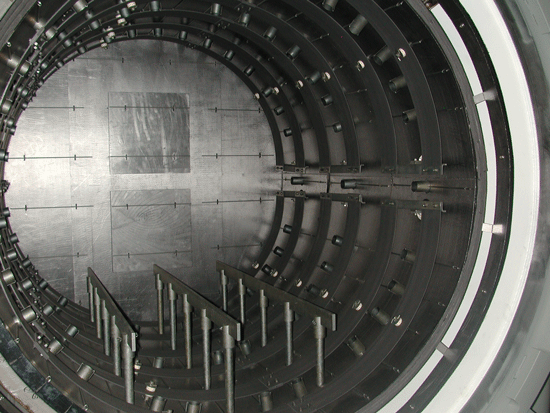
All-Metal Designs (Fig. 4)
Most all-metallic designs consist of a combination of materials, for example, three molybdenum shields backed by two stainless steel shields would be typical for 1150°C (2400°F) operation. Radiation shields are made with (relatively) expensive materials and are labor intensive to construct when compared to the purchase of other types of insulation. Their heat losses are high and become higher with loss of emissivity (reflectivity) due to the gradual oxidation and contamination of the shields. Radiation shields can be manufactured from:
- Stainless steel or nickel alloys having a maximum operating temperature of 1150°C (2100°F) with 980°C (1800°F) being a common limit.
- Molybdenum having a maximum operating temperature of 1700°C (3100°F)
- Tungsten or tantalum having a maximum operating temperature of 2400°C (4350°F).
Metallic shielding is known to have specific properties that coexist well in a vacuum environment including:
- Cleanliness – Refractory metals will not flake off particles that could contaminate the work or pumping system.
- Heat Absorption - Refractory metals are reflective to the radiant energy assisting in heat transfer.
- Outgassing - Refractory metals do not absorb gases as do the other materials and thus avoid prolonged pump down times.
- Low Heat Storage - Refractory metals do not hold temperatures as long as other materials and, therefore, allow for faster cooling.
Properly designed, all metallic hot zones have several distinct advantages: (a) surface area is small (relative to fiber insulation) so absorbed and desorbed gases are reduced, facilitating pump-down and (b) heat storage is low, promoting faster cooling.
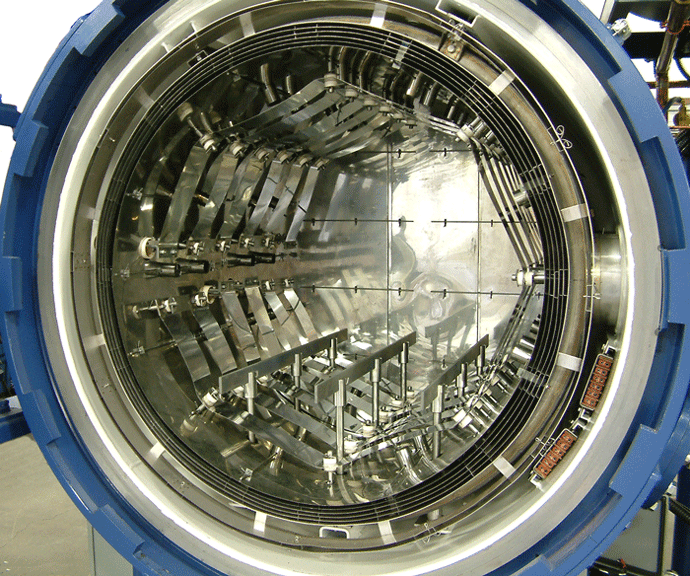
Combination Hot Zones
Combination (or so-called sandwich insulation packs) designs are composed of one or more radiation shields typically with ceramic wool insulation between or behind them. Combinations of graphite fiber sheets and ceramic insulation wool are also used. These versions are cheaper to buy and maintain but adsorb higher levels of water vapor and gases (due to the very large surface area of the insulation wool). Their heat losses are considerably lower than those of radiation shields. Advantages of this style include low cost, good maintainability, and good insulation value. Disadvantages include a tendency for the blanket to shrink, leaving voids, which allow heat loss; the dusting of the material, particularly after devitrification; and a strong tendency toward absorption of water vapor. The systems must be supported by hangers, which project through the insulation adding to potential heat loss problems. The maximum operating temperature of these designs is typically 1150°C (2100°F).
Heating Elements
The choice of a heating-element material depends largely on operating temperature. For low-temperature operations such as aluminum brazing or vacuum tempering, inexpensive stainless steel or nickel-chromium alloys can be used for the heating elements. For higher-temperature general heat-treating applications such as hardening, or brazing, molybdenum or graphite are popular choices for element materials. For specialized heat-treating applications above 1482°C (2700°F), refractory metals such as tantalum or tungsten are popular choices, though graphite is also used. Other processes such as low-pressure vacuum carburizing use graphite or silicon carbide elements.
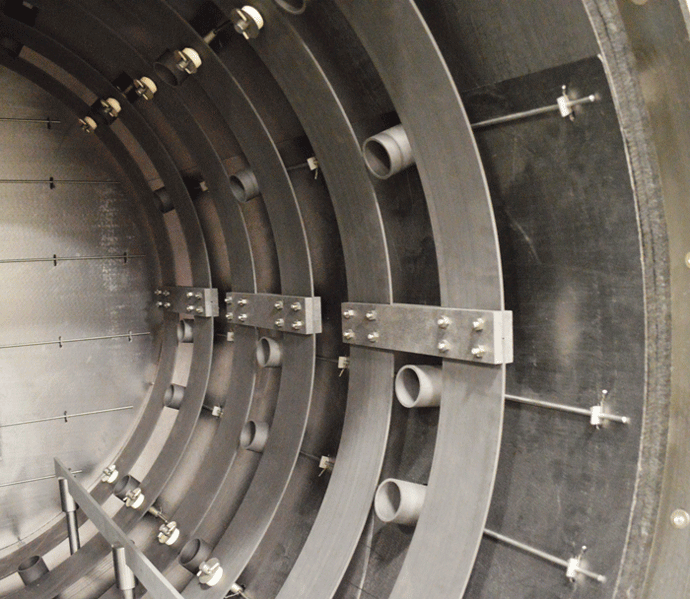
Almost but not all high-temperature vacuum furnaces are electrically heated. Resistance heating elements are constructed from metal or graphite in a variety of styles. In general, one of the following materials is used:
- Stainless steel alloys – 300 series alloys (e.g. 304L, 316L) can be used for heating elements up to (approximately) 760°C (1400°F).
- Nickel/Chromium and iron-aluminum based alloys – these typically operate up to temperatures of 900°C (1650°F) and exhibit good-to-excellent oxidation resistance, making them useful for a number of applications including hot wall type furnaces.
- Inconel® and other nickel alloys – depending on the material and vacuum level can be used up to 1150°C (2100°F). Above 800°C (1475°F) there is a risk of evaporation of chromium from these materials.
- Silicon carbide (SiC) – these elements have a maximum operating temperature of 1090°C (2000°F). There is a risk of evaporation of silicon at high temperatures and low vacuum levels of less than 0.133 mbar (100 microns). Silicon carbide is a glass-like brittle material even at ambient temperature.
- Molybdenum –with a maximum operating temperature of 1700°C (3100°F). Molybdenum becomes brittle at high temperature and is sensitive to changes in emissivity brought about by exposure to oxygen or water vapor.
- Lanthanated Molybdenum (aka lanthanum doped or MoLa) –has a higher recrystallization temperature than either pure molybdenum or HCT (potassium-silicon doped) molybdenum alloys and typically exhibits improved ductility after recrystallization. Maximum operating temperature remains at 1700°C (3100°F).
- Graphite – these elements can be used up to 2000°C (3630°F). Graphite is sensitive to exposure to oxygen or water vapor resulting in the reduction in material thickness. The strength of graphite increases with temperature, however, graphite has limited flexibility and can break if moved.
- Tantalum – Elements made of tantalum have a high duty temperature, typically 2400°C (4350°F). Tantalum is a strong getter material, becomes brittle brought about by exposure to oxygen or water vapor and is sensitive to changes in emissivity.
- Tungsten – Elements made of tungsten have the highest duty temperature, typically 2800°C (5075°F). Tungsten becomes brittle brought about by exposure to oxygen or water vapor and is sensitive to changes in emissivity.
Note: The above element ratings are downgraded from their upper operating limits.
Graphite is an excellent choice for heating elements being lightweight, strong at temperature and stronger at higher temperature, has a high melting point and a low vapor pressure. In addition graphite exhibits low contact resistance at internal connections and power feed-throughs has excellent thermal shock properties, is not degraded by constant heating and cooling and has a low heat expansion coefficient. Graphite has the ability to take a very high current density, and therefore very fast ramp-up times can be achieved.
Graphite elements can operate in very corrosive or aggressive atmospheres without significant degradation. The low resistivity of graphite means it requires high current power supplies and correspondingly large feedthrus and cables. Graphite also acts as a getter to oxygen although it is attacked and consumed in the process (forming CO and CO2 gas). Graphite heating elements can be supplied in rod, tube, bar, plate, circular shapes or cloth form.
Lightweight, curved graphite elements are becoming increasingly popular for vacuum furnaces. These elements have lower thermal mass than older-style graphite rod or bar elements. Compared to molybdenum strip elements, the curved graphite element has been reported to be more durable and has better resistance to operating hazards like accidental breakage or braze alloy flashing.
Carbon-carbon-composite (CFC) materials can also be used as heating elements and can be made into very thin sections, typically as thin as 1mm (0.04”) thick, due to their fibrous grain structure. CFC elements have a higher resistance than graphite elements, allowing lower current, higher voltage power supplies to be used. They also have extremely low thermal conductivity, reducing heat loss.
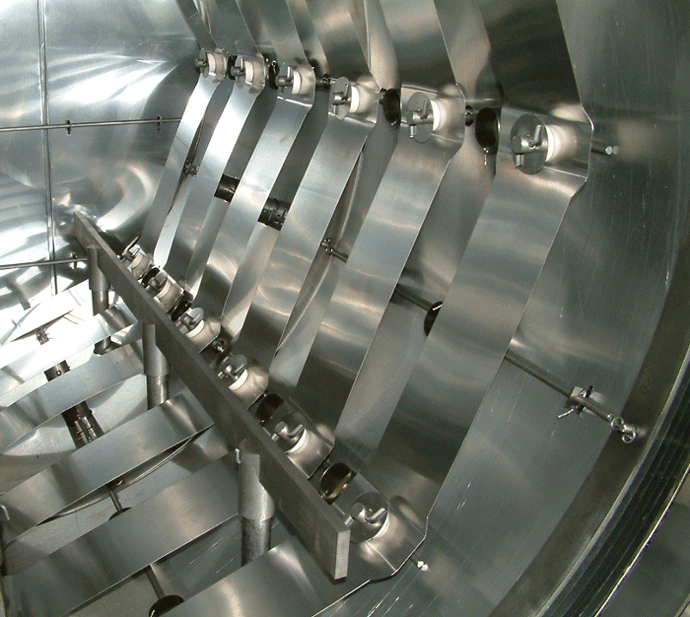
Molybdenum and other refractory materials (W, Ta) are popular choices for heating elements. In sheet form, the watt density of the radiating surface is low compared with cylindrical rod allowing lower operating temperatures. The tradeoff is in mechanical strength and as such good supports and restraining systems are necessary. All refractory metal heating elements undergo changes in electrical resistance so the design of the power system must control current during the onset of heating to avoid damage to the elements. In addition, the heating rate must be limited and controlled. Molybdenum, in particular, goes through a phase change and becomes brittle after initial heating. Metallic elements are typically available in strip, wideband, coil (wire), ribbon or rod form.
Silicon carbide is used in special applications and typically supplied in bar form (for electrically heated units) or tubes (for gas-fired units).
In the following section, we continue our discussion on the many factors that must go into the decision-making process during the acquisition phase of a vacuum furnace.
Earlier in this article, we focused on how one goes about choosing the right furnace for the job and talked about the various choices for hot zones (e.g. insulation, heating elements, etc.). We now continue this discussion by looking at other common vacuum furnace features and options. Recall that the four common elements of any vacuum furnace are:
- Hot zone
- Heating elements
- Pumps
- Controls
Once decisions have been made in these areas, other ancillary items (e.g. partial pressure control, loaders, etc.) must also be considered and will be talked about here as well.
Pumping Systems
Vacuum pumps are the heart of a vacuum system. In order to create a vacuum within a closed container, or vessel, we need to remove the molecules of air and other gases that reside inside by means of a pump. The vacuum vessel and pumps (mechanical, booster, diffusion, holding) together with the associated piping manifolds, valves (mechanical pump, high vacuum isolation, vacuum (break) release, backing), vacuum measurement equipment (molecule counters) and traps comprise a typical vacuum system.
While mechanical pumps have the ability to work against atmospheric backpressure and booster pumps improve the speed and level to which we pump down, these pumps lose efficiency as the system pressure drops. In order to reach extremely low-pressure levels (e.g. 10-5 to 10-6 Torr or lower) the use of diffusion pumps is required. For furnaces using mechanical pumps (wet or dry) an ultimate vacuum in the range of 5 x 10-2 Torr to 1 x 10-1 Torr is typical. When a blower (booster) pump is added, the ultimate pressure will drop into the range of 2 x 10-2 Torr and the speed of pump-down will be significantly increased.
To reach these various vacuum levels, different vacuum pumping systems are required. The foundation of any of these systems is the positive displacement mechanical or roughing pump (Fig 7). The roughing pump, so-called because it is used to produce a “rough” vacuum, is used for the initial pump-down from atmospheric pressure. Mechanical pumps operate under the principle that they take in a large volume of air at the beginning of the cycle, compress it to a small volume and then exhaust it to the outside atmosphere. In a “wet” pump, a thin layer or film of oil creates the actual seal between the moving parts. Gas is exhausted under pressure against a valve disc at the outlet.
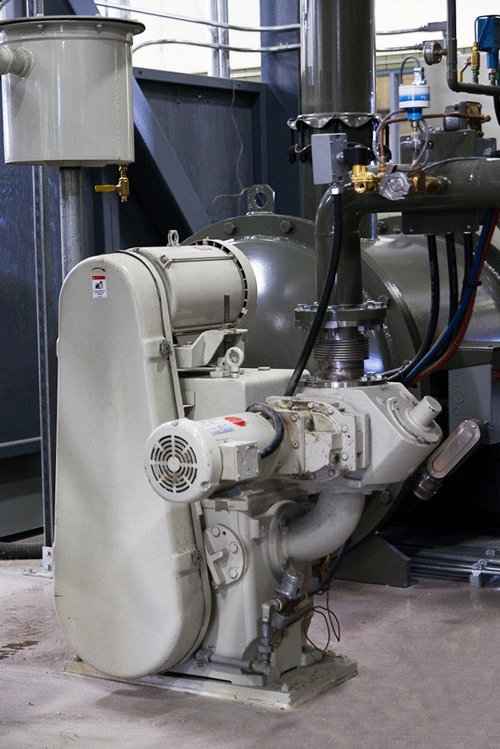
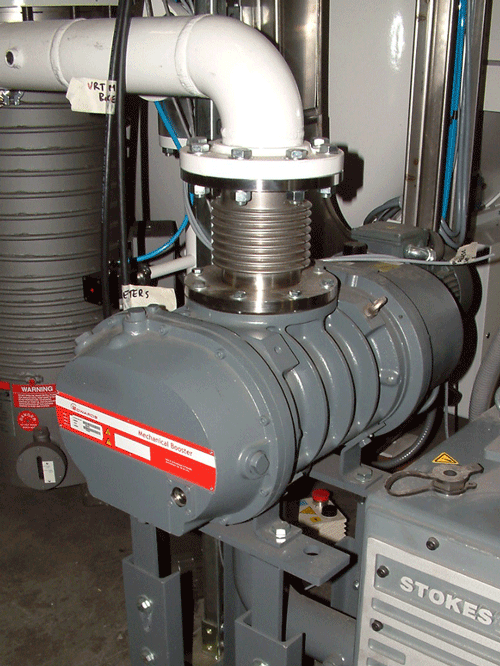
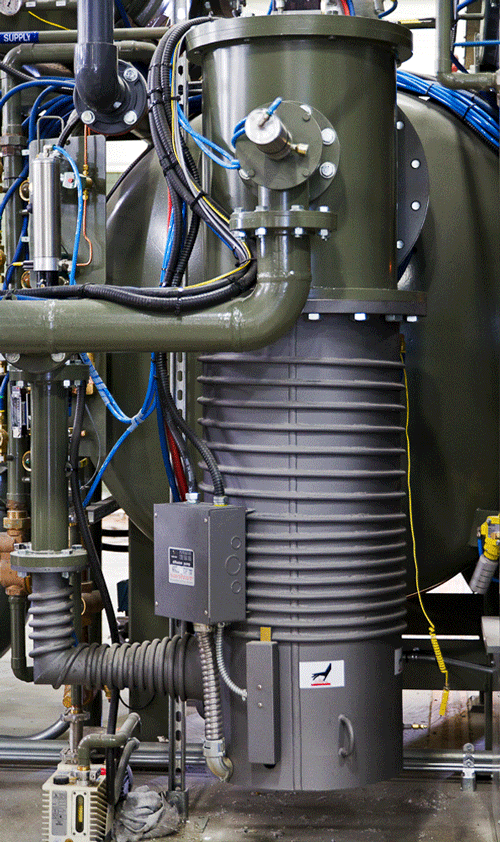
The booster pump (Fig. 8), or blower, is a different type of mechanical pump that is placed in series with the roughing pump and designed to “cut in”, or start at anywhere from 20 to 50 Torr. It provides higher speeds from this pressure range to 1 x10-3 Torr. A booster pump is necessary for this intermediate pressure range because the roughing pump is losing efficiency while the diffusion (vapor) pump has yet to start to reach full efficiency. For systems equipped with diffusion pumps, the pump-down time to high vacuum crossover is often important, a target of 10 – 15 minutes being typical.
The diffusion pump (Fig. 9) consists of a boilerplate system in which a high-grade silicon fluid is heated and then subsequently vaporized during boiling typically by means of an external heating element and a stack assembly, or chimney (commonly referred to in the industry as a “Jet Stack” assembly) up through which the vapors pass, exiting the chimney through one or more levels of annular converging/diverging nozzles directed radially outward and downward at an angle of approximately 45 degrees and at speeds well in excess of 400 km/hr (250 miles/hr). The hot vapors are accelerated by the action of the compression stacks within the diffusion pump that serves as a venturi creating supersonic velocities. As they travel outward and downward they collide with molecules of the gases being drawn into the pump inlet by the pressure differential created during the boiling of the oils thus giving them an effective downward velocity toward the exit (foreline) from which they are removed efficiently by the mechanical pumping system.
Diffusion pumps are, therefore, a type of vapor pump (without moving parts) and are used to help achieve lower system pressures that can be achieved by a mechanical pump/blower combination alone. The diffusion pump is capable of pumping gas loads with full efficiency with/at inlet pressures not exceeding 8 x 10-2 Torr and discharge (or foreline) pressures not exceeding 3 x 10-1 Torr. The diffusion pump cannot operate independently, it requires a separate pump to reduce the chamber pressure to or below the maximum intake pressure of the pump before it will operate. Also, while operating, a separate or holding pump is required to maintain the discharge pressure below the maximum tolerable pressure.
Controls technology
Instrumentation and process controls (Fig. 10) used on vacuum furnaces in the heat treatment industry are extremely diverse due in large part to the fact that the life of a vacuum furnace can range from 20 to 50 years! These packages range from simple controllers to sophisticated HMI (Human Machine Interface) systems.
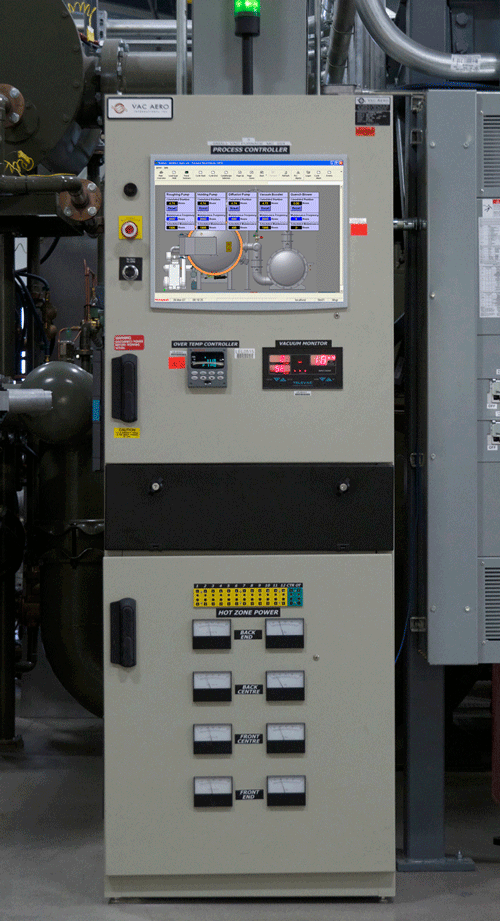
It is important to recognize that furnace instrumentation and control packages are constantly evolving with constant advances in hardware and software. Even basic control packages now often include easy-to-understand touchscreens with graphics displaying operating indicators and alarms. Where more advanced data management applications justify the higher cost, the PC-based control system is a user-friendly and versatile tool. Perhaps its biggest advantage is an access capability that allows the user to analyze, adjust and download operating parameters from remote locations. These systems can be connected to local networks for multiple user access and even to the Internet via secure connections.
Digital data recorders are an advanced data collection system allowing storage and report of process and equipment variables that allows one to monitor conditions over time and observe trends, as well as create a historical record and backup of the data. These types of records help predict when maintenance will be required and avoid unexpected downtime.
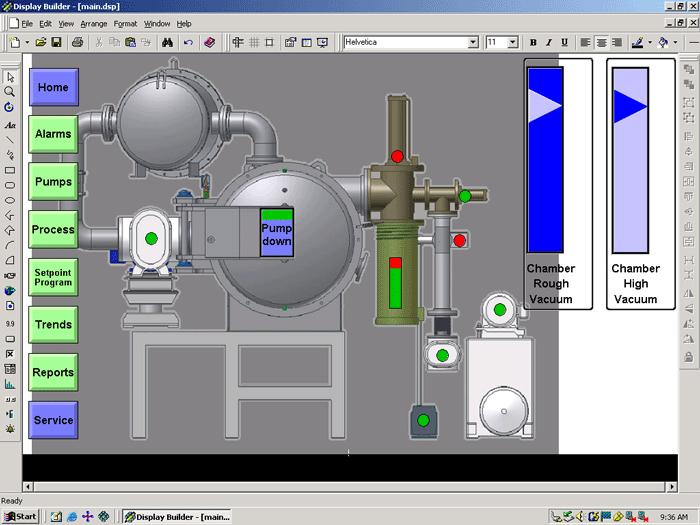
Supervisory Control and Data Acquisition (SCADA) systems (Fig. 11) allow furnace users to view data and operational settings for multiple furnaces at the same time on a single display, thus providing more flexibility for collecting and reporting data in one central location.
Network connectivity allows one to review, in real time, critical data about the heat treatment process being run. Features such as email notifications of alarms, monitoring of the Programmable Logic Controller (PLC) inputs and outputs and advanced firewall capabilities make this an attractive option. These types of systems allow engineers and field service technicians to remotely view the equipment and recommend adjustments helping to avoid prolonged downtime and maintenance expense.
Finally, with all the available controls technology on the market, it is critical to choose the package that is right for the type of furnace and application being run.
Other Considerations
Grids, Baskets & Fixtures
Component parts that are to be heat-treated must be properly loaded and are usually placed into baskets if relatively small or directly onto grids if larger (Fig. 12). The baskets can either be placed on a grid or in some cases directly onto the hearth rails of the furnace. Today, fixtures are made from either stainless steel alloys (e.g. RA330® or Inconel 600®), carbon/carbon composite materials or graphite.
Work grids can be cast or fabricated, being manufactured from stainless steels or high-temperature alloys such as molybdenum, which is particularly well suited for high-temperature service. Graphite plates are common, but care must be taken to insulate the plate from the metallic workpiece if there is a concern over eutectic melting.
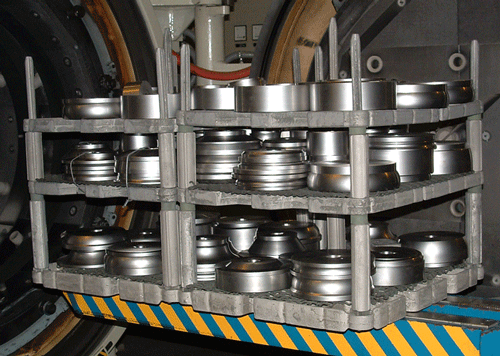
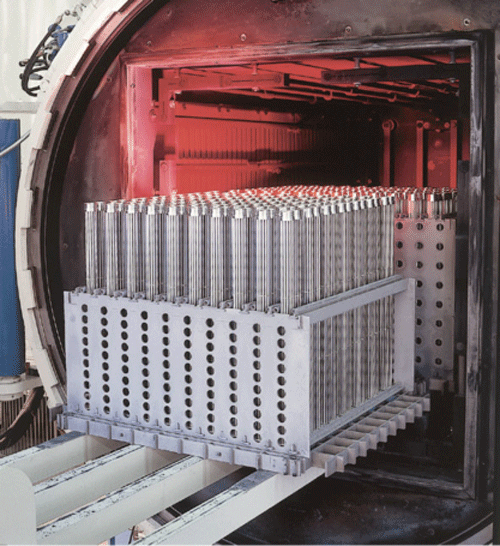
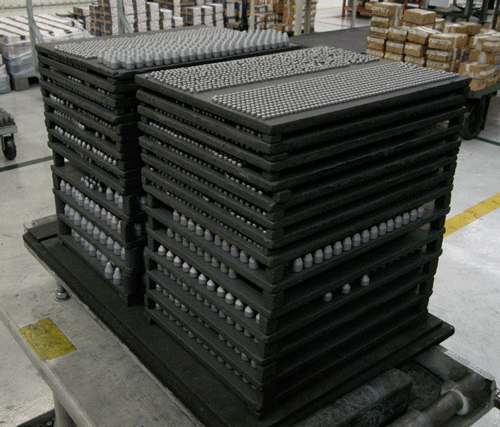
Typically, several sets of baskets or fixtures are required for each vacuum furnace in operation (while one set is in the furnace, the second set is being prepared for the next cycle). Often alloy baskets and fixtures require periodic maintenance such as straightening or weld repair.
Water Recirculation Systems
Water systems (Fig. 13) are an excellent short and long-term way of protecting your vacuum furnace. Most plant systems fall into one of three general categories (or combinations thereof), namely single or multiple pass or recirculation type.
The water source can be city water or well/river water, which can vary in hardness and mineral content, all of which leads to premature issues with hot spots on the vacuum vessel, loss of shell integrity (thickness) due to rusting and/or shorter component life (e.g. power feedthrus). All of which can reduce vacuum chamber life dramatically, in some instances from a normal 30 – 40 year life to as little as 10 – 15 years.
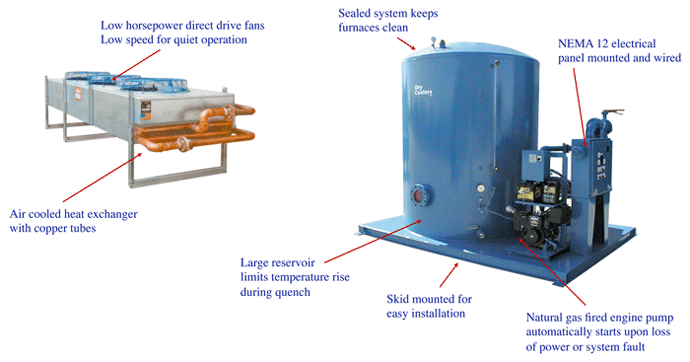
In a single pass system, the cooling/process water is used only once and then discharged from the system. Today, it must often be treated before being discharged into the sewer system and is subject to a number of EPA, federal, state and local codes. Many consider this the least expensive type of system and it is perhaps the most common (although, in this writer’s opinion, not the best). In areas where the water has high hardness levels or large amounts of total dissolved solids, the rate at which rust or scale will form and other problems occur increases exponentially thus necessitating more frequent cleaning or flushing of the cooling system and associated piping.
Recirculation systems are those in which the cooling medium is reused and recycled. Three basic types are: (1) additive systems, (2) open systems and (3) closed systems. An additive system uses make-up water to maintain a specific temperature or temperature range for the cooling system. Higher temperature water is discharged from the system to help maintain temperature control. The advantage over a single pass system is that the amount of water used is minimized. A typical system requires a recirculation pump, sump tank, and automatic water temperature control system.
Open recirculation systems utilize evaporative cooling in a cooling tower, evaporative condenser, sump tank or spray pond to remove large amounts of heat with small amounts of water loss. One concern with this type of system is the tendency to concentrate contaminants and must be dealt with by regulating the amount of water that is bled off the system and by monitoring the condition of the water present in the system. The issue of dissolved oxygen in the water is also a great concern.
Closed recirculation systems with water/water, water/liquid or water/air heat exchangers have become popular methods of controlled cooling especially when water treatment costs are to be minimized or “zero” discharge situations are required.
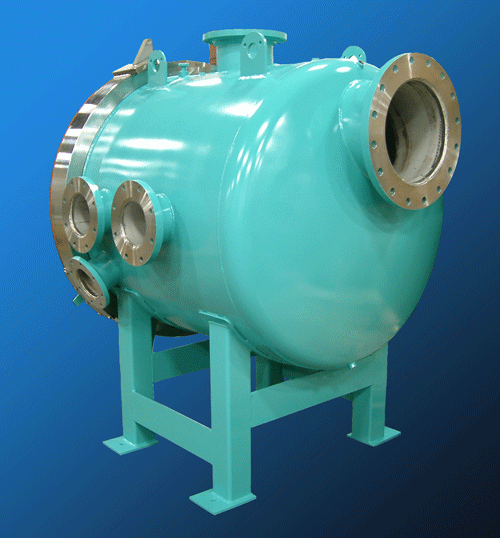
Ancillary Items
There are a variety of options available on most vacuum furnaces. The list varies by manufacturer and personal preference but some of the more common include:
- Furnace loaders can be manual, electric motor, pneumatic or hydraulically operated and usually include a feature which allows someone to load parts with precision and avoid breaking or damaging the furnace hot zone.
- Accumulator (surge) tanks allow an adequate gas supply, at the right pressure and volume to be delivered to the furnace on-demand.
- Convection heating is a convenient option for those who process dense loads and depending on the part geometry and load configuration, this feature may help achieve better uniformity in heating parts and help to decrease cycle times.
- Spare parts kits can help minimize downtime by keeping critical or long-lead spare parts and maintenance items in inventory.
The first part of this article focused on how one goes about choosing the right furnace for the job and talked about the various choices for hot zones (e.g. insulation, heating elements, etc.). In the second part of this article, we discussed pumping systems, controls and ancillary support items (e.g., grids/baskets/fixtures, water systems, features & options).
In the third part of this article, we continue our discussion on the factors that must go into the decision-making process during the acquisition phase of a vacuum furnace. It is now time to understand how your supplier partner will handle the project once an order is received, including project management, codes & standards, approvals, installation, commissioning and long-term support.
Order Processing
Okay, you have selected a vendor partner to supply your vacuum furnace, so what type of support should you now expect? To begin with, it is important to understand how your order will be handled internally by the company you have selected. The first task they face is to transfer the order from their sales team to their engineering team and, ultimately, to the manufacturing and service/support teams.
After receipt of an order, your supplier partner will typically schedule an engineering “kickoff” meeting where the project is given to engineering and a project manager (or project engineer) is assigned. Out of that meeting will be generated the final equipment specification and this should be provided to the purchaser shortly (e.g., 1 – 2 weeks) after receipt of the purchase order for approval.
Engineering Phase
Whether the unit is a standard model or a completely custom design, the role of engineering is to ensure that the unit purchased is fit for its intended purpose. Since you as a purchaser may have never met or interfaced with the individual(s) assigned to your project, it is critically important that you make sure they are aware of your specific application needs and production requirements. This can be done through your sales contact or by directly interfacing with the engineering department. One would be amazed by how many engineers work on projects without ever having a complete understanding of what the end user intends to use the equipment for! Do not let this happen. This same engineer may or may not be the project manager who will be assigned to oversee all aspects of the internal build as well as interfacing with the purchaser for problem-solving after the unit has shipped. Understand how your supplier partner’s internal and external project management works.
The engineering department will then decide on and finalize the necessary design features and issue drawings, bills of material and other documentation or instructions that will allow manufacturing to fabricate the unit.
Codes & Standards
Today, all vacuum furnaces sold in North America should, at a minimum, meet the most recent revisions of the following standards. If you have other requirements, be sure to specify them.
- OSHA (Occupational Safety & Health standards, www.osha.gov)
- NFPA (National Fire Protection Agency, www.nfpa.org).
- Standards 86 (Standard for Ovens and Furnaces) – Note: Class D applies to vacuum furnaces;
- Standard 70 or 79 (National Electric Code)
- ASME International (www.asme.org). (If applicable) Boiler & Pressure Vessel Code Section VII, Division 1.
- UL (Underwriters Laboratory, www.ul.org)
- Individual components (as opposed to the entire system)
In addition, many vacuum furnaces must meet the requirements of the following specifications or organizational compliances for accreditation:
- AMS International (www.ams.org)
- AMS 2750 (Pyrometry)
- AMS 2769 (Heat Treatment of Parts in a Vacuum)
- AMS 2759 (Heat Treatment of Steel Parts, General Requirements) and related slash numbers
- Nadcap (www.pri.org)
- CQI-9 (www.aiag.org)
Finally, electrical components used in the fabrication of the furnace system for international service must be CE (Conformité Européene or European Conformity) approved and/or in some cases CSA International (Canadian Standards Association) approved.
Manufacturing Phase
Once materials have been ordered and drawings issued by engineering, the manufacturing phase of the process begins. Once again, it is important to be sure that as the purchaser you have reviewed the manufacturing capabilities of your supplier partner. Knowing what components are fabricated in-house, which are purchased, and which are fabricated or assembled by third parties is important should problems arise once the equipment is in the field. For example, is your supplier partner an ASME coded shop or will the pressure vessel (if required) be fabricated by an outside company – and if so, what are their capabilities and competency?
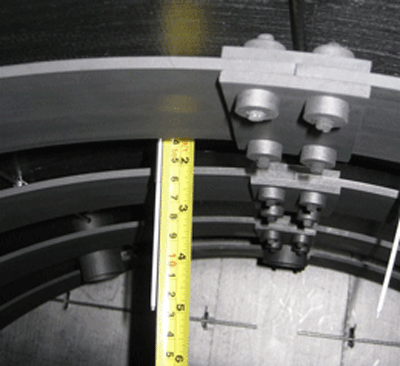
Many purchased components have limited warranties, which may have to be extended by agreement with these suppliers. Other components, such as instrumentation or programmable logic controllers may have been chosen from numerous model numbers – check to make sure that they have the right features for your needs (e.g. communications capability, etc.).
Installation Phase
Preparation is the key to a successful installation. Some of the factors to consider include:
Instruction Manuals / Documentation & Drawings
An equipment operation manual (either in hardcopy or electronic format) and an overall layout drawing along with piping, wiring and electrical drawings are typically provided with a vacuum furnace purchase. You want copies of these drawings as early in the process as possible to aid in installation planning. For example, the equipment layout drawing normally contains the required utility locations and supply requirements. It is normally provided at the completion of engineering and must be available in time to prepare the site. Finally, if detailed assembly drawings of any or all systems are desired, it is often necessary to negotiate this up front with your supplier partner.
Utilities
The most common utility requirements involve the following:
- Electrical Supply. The vacuum furnace electrical requirements are based on the customer’s plant voltage. Incoming power fluctuations of ±10% are typically anticipated with the total power required based on the furnace size, type, and features provided.
- Power Supply. In many cases, the heating element power is supplied by (single phase) variable reactance transformer (VRT) assemblies. Most VRT’s have a 0 – 100% trim control for optimum temperature uniformity in the hot zone.
- Water Supply. The end-user is responsible for ensuring that the water supply is suitably treated to prevent corrosion, mineral build-up and cooling system blockage due to particulate matter. Furnace systems typically require the water to be at a given temperature, pressure and flow rate depending on the specifications of the specific furnace involved.
- Water systems are often separated into zones (e.g. front door, shell, heat exchanger, etc.) with individual inlets, outlets, and drains.
- Both open and closed water systems are common, depending on the type and design of the vacuum system.
- Air (or nitrogen) Supply. Clean, dry, filtered air is required at a specified (minimum) pressure. Typical values would be 80 – 100 psig.
- The supply pressure must be constant and often available even when the furnace is shut down.
- Gas Supply (e.g. nitrogen, argon, helium, hydrogen). An inert gas species is normally supplied for end of cycle backfill to atmospheric pressure.
- If partial pressure or (gas) quenching is required, the gas species is often dictated by application requirement. Pressure, flow and volume depend on the specifications of each individual furnace (e.g. backfill cycle).
- The use of an accumulator (surge) tank is often necessary, especially when performing a high-pressure gas quenching operation, to provide adequate capacity to the system to meet the demand.
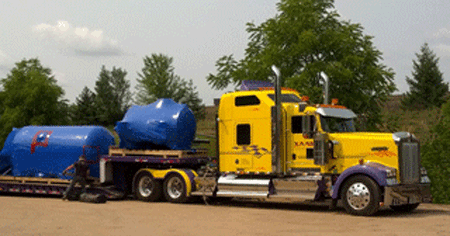
Installation & Startup Assistance
Many vacuum furnace systems are shipped as complete units, factory tested and ready for installation. Various suppliers, however, have different interpretations of factory testing so this should be clearly understood by all parties prior to equipment purchase.
Testing may involve functionality testing of components, cold or hot cycling, conducting temperature uniformity surveys on the shop floor or even (in rare instances) running sample loads. All vacuum furnaces should be leak tested prior to leaving the factory and most vacuum furnaces will be cold cycled to check mechanical functionality of the entire system. Computer controls, software, instrumentation (temperature & vacuum) and electrical systems are normally fully debugged prior to shipment.
It is also important for the purchaser to understand how a particular vacuum furnace needs to be disassembled (and, of course, reassembled) for shipment. In particular, how the component parts are to be dismantled and protected from damage. The choice of shipping method (e.g., dedicated trucks, lowboys, special permitting, etc.) must be taken into consideration as well as necessary insurance coverage.
To facilitate and coordinate these operations, the purchaser is often invited to send personnel to witness these tests and/or for operational and maintenance training and pre-installation instruction. This type of training is commonly provided at no charge or for a small fee (the purchaser being responsible for travel and living costs). Some supplier’s offer training classes as well.
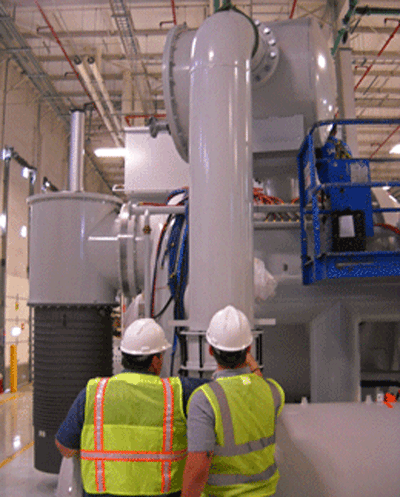
Since the purchaser is normally responsible for making all necessary site preparations and connecting power, water, inert gas and compressed air supplies, a great deal of pre-shipment coordination and planning is required. This is often started during the engineering phase of the project and continues literally up until the arrival of the equipment at its final destination. Movement of the vacuum furnace components from the trucks to the final site is an important consideration as well.
Most suppliers offer installation supervision and/or complete installation services. After installation, a qualified technician travels to the site to commission the equipment and provide instruction in furnace operation.
After the equipment has been installed and connected to its service utilities either by the purchaser or the supplier partner, a qualified field service engineer is sent out for startup (commissioning) and final onsite training. These activities normally include instrument configuration, verification of electrical, mechanical and thermal functions and performance testing consisting of a temperature uniformity survey and measuring of ultimate vacuum, leak up rate and pumping speed. The cost for these services is either established during the equipment acquisition phase or when needed.
One of the most frustrating aspects of any furnace installation is understanding how long startup will take (delays may be induced by either party) and the time/cost impact of warranty work. Warranty work is often poorly documented and misunderstood (by both parties) and the procedures to handle this circumstance if/when it arises are almost never negotiated by the purchaser up front. It is also compounded by trying to differentiate between the hours spent in getting a piece of equipment operational and in troubleshooting problems. A clear understanding of the issues and good documentation are key.
Warranty
Today, most vacuum furnace suppliers warrant their equipment for either one or two years, either from date of shipment, date of acceptance, or a specified number of days after shipment. The supplier has general terms and conditions. It is as important for the purchaser to review and negotiate warranty (and other terms) as it is to negotiate the final package price for the system.
Maintenance & Ongoing Support
What is important for a potential vacuum furnace purchaser to understand is that routine maintenance of a vacuum furnace is usually his/her responsibility and that the supplier is ready, willing and able to provide ongoing engineering, technical (and in some cases application), service and spare parts support. For their part, the purchaser has to understand the type of maintenance required and have the maintenance personnel with the necessary skill sets and tools to do the job per the manufacturer’s instructions.
Sample Preventative Maintenance Schedule (Single Chamber Vacuum Furnace)
Weekly (or more frequently)
- Check lubrication on roughing, booster and holding pumps.
- Drain roughing pump drip leg and air line filter.
- Check airline lubrication.
- Inspect furnace hot zone for defects and clean furnace doors and walls (where accessible).
- Inspect flow through cooling water return lines at drain manifold in water reservoir.
- Bake-out furnace and measure leak up rate. Note: Leak up rate should be 10 – 20 microns/hr. or less.
Monthly
- Check grease caps on valves and lubricate valve stems.
- Check diffusion pump oil level.
- Inspect drive belts on all pumps and water system roof evaporator unit.
- Check water and air pressure alarm systems.
- Check water treatment system (if applicable).
- Inspect roof evaporator unit for sediment build-up in water sumps and for plugged or incorrectly adjusted nozzles.
- Check make-up water float switches and solenoid.
- Inspect all hoses and connections.
- Check pick-up placement, alignment and travel limits of load dolly (if dolly is present).
- Perform general visual inspection of the entire furnace system.
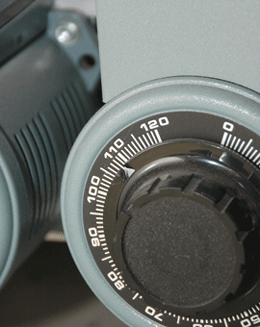
Quarterly
- Check over temperature safety alarm.
- Check Y-strainer on water system (if fitted).
Semi-Annually
- Check all electrical connections, including element power terminals.
- Check all safety interlocks for correct operation.
- Drain and replace oil in roughing booster and holding pumps (customer supplies oil).
- Change control and over temperature thermocouples (customer supplies thermocouples).
- Check conductivity on ceramics insulators.
- Change holding pump oil (customer supplies oil).
- Check the operation of water and air pressure alarms.
- Check the operation of inert gas supply pressure alarm.
Annually
- Inspect and clean all vacuum valves and replace O-rings (if required).
- Inspect and clean roughing pump and replace clappers and springs (if required).
- Inspect and clean diffusion pump (if applicable).
- Inspect and clean quench motor housing and quench pipework.
Summing Up
The purchase of a vacuum furnace represents both a long-term investment and establishes a long-term partnership between the purchaser and the supplier of that equipment. For this if no other reason, taking the time to differentiate between needs and wants and carefully understanding both the production requirements and the capabilities and limitations of the potential supplier partners is of critical importance. Be sure to evaluate all aspects of your process needs, both now and into the foreseeable future and consider all relevant factors – from material type to the geometry and mass of the component parts that must be processed; from the production throughput to the property (mechanical, physical, metallurgical) requirements that must be met. Finally, understand the equipment choices and options available to you to determine which supplier partner is the best choice for you.
References
- Herring, Daniel H., Vacuum Heat Treatment, BNP Media Group, 2014.
- “Important Considerations When Purchasing a Vacuum Furnace”, Vacuum Furnace Reference Series No. 6, Solar Atmospheres, 2012.
- “New Considerations When Buying a Vacuum Furnace”, Vac-Aero International.
- ”Choosing the Right Furnace to Stay Ahead of the Curve”, Ipsen, The Harold, November 2014.
- “Important Considerations for Establishing a New Vacuum Heat Treating Capability”, White Paper, Vac-Aero International.
- Herring, Daniel H., Vacuum Heat Treatment, BNP Media Group, 2014.
- “New Considerations When Buying a Vacuum Furnace”, White Paper, Vac-Aero International.
- ”Choosing the Right Furnace to Stay Ahead of the Curve”, The Ipsen, Harold, November 2014.
- “Important Considerations for Establishing a New Vacuum Heat Treating Capability”, White Paper, Vac-Aero International.
- “Important Considerations When Purchasing a Vacuum Furnace”, Vacuum Furnace Reference Series, No. 6, Solar Atmospheres, 2012.
- Herring, Daniel H., Vacuum Heat Treatment, BNP Media Group, 2014.
- “New Considerations When Buying a Vacuum Furnace”, White Paper, Vac-Aero International Inc.
- ”Choosing the Right Furnace to Stay Ahead of the Curve”, The Ipsen, Harold, November 2014.
- “Important Considerations for Establishing a New Vacuum Heat Treating Capability”, White Paper, Vac Aero International, Inc.
